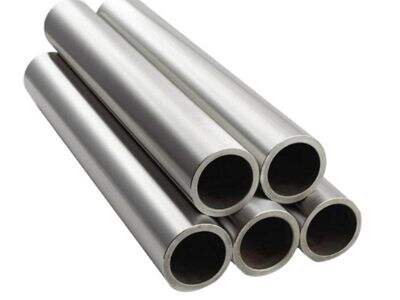လိုအပ်သော ឧညီများကို စုဆောင်းခြင်း:
အိမ်တွင် အသစ်ဖြစ်သော လှံများကို ထည့်သွင်းရန်အခါ၊ Jinzheng မီးရောဂါမှားမဟုတ်သော လှံများက ဒီလုပ်ငန်းအတွက် ကောင်းသော ရွေးချယ်မှုဖြစ်သည်။ ဒီလှံများသည် တောင်းဆိုသောအခါမှာလည်း အကြီးအကျယ်ရှိပြီး အသားကြီးလှပါသည်၊ ထို့ကြောင့် သောင်းပို့ရေးအတွက် အသုံးပြုနိုင်သည်။ လုပ်ငန်းခြင်းတွင် စတင်ခြင်းအတွက် လုပ်ငန်းကို ပြီးစီးရန် လိုအပ်သော အကြောင်းအရာများကို စုဆောင်းခြင်းသည် အရေးကြီးပါသည်။ မှန်ကန်သော ឧညီများသည် သင့်အလုပ်ကို ပိုင်းခြားမှုနှင့် ပိုမိုများစွာ ပြုလုပ်နိုင်စေပါသည်။ အောက်ပါ အကြောင်းအရာများကို လိုအပ်ပါသည်-
လှံဖြတ်မှု: လှံကို လိုအပ်သော အရွယ်အစားသို့ ဖြတ်သည့် ထူးခြားသော ឧညီဖြစ်သည်။ အကယ်၍ လှံကို မှန်ကန်စွာ ဖြတ်ခြင်းမရှိပါက၊ အမှန်တကယ် မှီသောအခါ မှီပါသည်။
လှံဝိုင်ချုပ်: လှံများကို ချိတ်ခြင်းသို့မဟုတ် ဖွင့်ခြင်းအတွက် အသုံးပြုသည့် ပုံသဏ္ဌာန်တွင် လည်း သို့မဟုတ် spanner wrench ဟုခေါ်သည်။ လှံများကို ချိတ်ခြင်းသည် အလွယ်တကူ ဖြစ်ပါသည်။
Teflon tape: ဒီအရာက သင့် BFF ဖြစ်ပါတယ်။ လှံချိတ်ခြင်းများအနီးကပ်စေရန် အသုံးပြုသည်၊ ထို့ကြောင့် သွားပျော်မှုမရှိဘဲ ဖြစ်ပါသည်။
အဆင့် 1: ပိုင်းများကို တွေ့ဖြည့်နှင့် ဖြတ်ခြင်း
သုံးစွဲသူသည် Jinzheng ကိုင်းရောင်လေးများကိုသာ သုံးရမည်။ ယင်း၏ ကိုင်းများသည် အလျားလျော့လျှင် သို့မဟုတ် အလျားကျော့လျှင်၊ အခြားဘက်တွင် မှီချင်းစီးပါးမည်မဟုတ်ပါ။ ဒီမှာ ကိုင်းများကို တွေ့ဖြည့်နှင့် ဖြတ်ရန် သုံးခုသော လွယ်ကူသော အဆင့်များကို ဖတ်ရှုပါ:
ပထမဆုံး၊ ကိုင်းများဖြင့် ဆက်ထားသော နေရာများအကြား အကွာအဝေးကို ရယူပါ။ ယင်းကို တွေ့ဖြည့်မှုအတွက် တွေ့ဖြည့်မှုအသားဖြင့် လုပ်ဆောင်နိုင်ပါသည်။
မှန်ကန်သော တွေ့ဖြည့်မှုရှိပြီးနောက်၊ ကိုင်းကို ဘယ်နေရာမှာဖြတ်ရမည်ဆိုတာကို သိရှိရန် ပင်စားသို့မဟုတ် မာ့ကာဖြင့် သင်ဖြတ်ရမည့်နေရာကို သိုလှောင်ပါ။
ယခု ကိုင်းဖြတ်သော ပြုပြင်မှုကို ယူပြီး ကိုင်းကို ဖြတ်ပစ်ပါ။ သိပ်ဝေးမှုနှင့် ကိုင်းပေါ်တွင် မှီချင်းစီးပါးမည့် ဖြတ်ခြင်းဖြင့် လုပ်ဆောင်ပါ။ ကိုင်းများကို ပိုမိုကောင်းစွာ ဆက်ထားရန် ဖြတ်ခြင်းသည် မှီချင်းစီးပါးမည်ဖြစ်သည်။
ပိတ်ဆက်မှုများ: လောင်းများကြားသို့ ချိတ်ဆက်ခြင်း
အထည်ဖော်သော အရှည်သို့ လောင်းများကို ဖြတ်ပြီးနောက်၊ ပိတ်ဆက်မှုများဖြင့် ထိုများကို ချိတ်ဆက်ခြင်းက နောက်ဆုံးအချိန်ဖြစ်သည်။ ထိုများသည် လောင်းများကို ချိတ်ဆက်ရန် ကူညီပေးသော အထူးမျိုးစုံပစ္စည်းများဖြစ်သည်။ ဒါကြောင့် လောင်းများကို ချိတ်ဆက်ရန် အဆင့်အတန်းများကို အောက်ပါအတိုင်း ဖြစ်ပါသည်-
ပထမဆုံးတွင်၊ လောင်း၏ နှစ်ဘက်ကိုလည်း သံ့ချိုးဖြင့် ဆေးဆွဲပြီး မျက်နှာပြင်ရန် ဖြစ်သည်။ ဤအချိန်မှာ မျက်နှာပြင်မှုများကို ဖယ်ရှားပြီး နောက်ပိုင်းတွင် ပြဿနာများဖြစ်ပေါ်မည်မဟုတ်ကြောင်း ကြိုတင်ပြသထားသည်။
ထိုနောက်တွင်၊ ပိတ်ဆက်မှု၏ ချဉ်များပေါ်တွင် Teflon တောင်းကို ပိတ်ဆို့ပါ။ ဤတောင်းသည် ချိတ်ဆက်မှုသည် ပိတ်ပင်ထားသည်၊ မော်လော်မှုမရှိပါ။
ယခုတွင် ပိတ်ဆက်မှုကို လောင်း၏ တစ်ဘက်ဖက်သို့ ချိတ်ဆက်ပါ။ ထို့ပြင် ပိတ်ဆက်ထားသည်ဟု သေချာစွာ စစ်ဆေးပါ။
သင့်ဟာ pipe wrench ကို အသုံးပြု၍ ဖစ်တင်ကို ချိတ်ဆိုင်ရာအတွက် သုံးနိုင်သည်။ ဒါကို ကောင်းလောက်ပြီး ချိတ်ထားပါ၊ ဒါပေမယ့် လှုပ်ရှားမှုမရှိဘူးအဲ့လို များလောက်မပြုလုပ်နဲ့။
ပိုင်းခြားရှိ အခြားဖက်တွင် ဒုတိယဖစ်တင်သို့ ချိတ်ဆက်ပါ။ ဒီဆက်သွယ်များကို (သူတို့သည် snug ဖြစ်သင့်သည်) နှစ်ခုလုံးကို ပြန်လည်စစ်ဆေးပါ။
ပိုင်းများကို ထည့်သွင်းခြောက်ခြင်း:
ပိုင်းများကို ယခု ဆက်ထားပြီးဖြစ်သော်လည်း သင့်သည် သူတို့ကို နေရာတွင် ပြီးစီးရန် ထိန်းသိမ်းရန်လိုအပ်သည်။ ဒီမှာ လှုပ်ရှားမှုမရှိဘူးအဲ့လို လျှော့ချမှုများကို ရှာဖွေရန်အတွက် အရမ်းကို ထိန်းသိမ်းရန် ပုံမှန်ကို ပြောပြပါမည်။
ပိုင်းများကို အခြေအနေတစ်ခုသို့ သို့မဟုတ် robust များတွင် ချိတ်ဆက်ရန်အတွက် pipe clamps ကို လှုပ်ရှားပါ။ Clamps သည် ပိုင်းများကို လျှော့ချမှုမရှိဘူးအဲ့လို ထိန်းသိမ်းပေးသည် ထို့ကြောင့် အလွန်အသုံးဝင်သည်။
လက်မှတ်များအားလုံးကို သုံးပြီး ကောင်းစွာ ချိတ်ဆက်ထားရန် သေချာစွာ လက်မှတ်များကို သုံးပါ။ လက်မှတ်များကို လုံလောက်သော ပမာဏဖြင့် မသုံးပါက လက်မှတ်များကို ရွှေ့ပြီး နောက်ပိုင်းတွင် ပัญหาများ ဖြစ်စေနိုင်သည်။
လျှော့ချမှုများကို စစ်ဆေးခြင်းနှင့် နောက်ဆုံးအလုပ်များ:
အမှန်တော်၊ သင့်ရဲ့ အသေးစိတ်ဖြင့် လုပ်ဆောင်မှုကို ပြီးစီးမှသာ လျှော့ချမှုများကို စစ်ဆေးခြင်းဟာ အရမ်းကြီးကျယ်လွှာဖြစ်ပါသည်။ ဒါဟာ သင့်အား စနစ်တစ်ခုချင်းစီ ပြင်းထန်စွာ လုပ်ဆောင်နေကြောင်း ပြောင်းလဲပေးပါမည်။ ဒီလို လျှော့ချမှုများကို အကောင်းဆုံးစွာ စစ်ဆေးရန် နည်းလမ်းများဖြစ်ပါသည်-
ရေပေးဆောင်ချိန်ကို ပြန်လည်ဖွင့်ပြီး လျှော့ချမှုများအားလုံးကို လေ့လာစွာ စစ်ဆေးပါ။ အောက်ဘက်သို့ ကြားပြီး ရေပျော်မှုများ ရှိမရှိ ကြည့်ပါ။
ထို့ကြောင့် လျှော့ချမှုများမရှိပါက အပြင်းအထန်မှုများပြီးပြီ မျှဝေပါ။
ပိုင်းကွဲမှုတွေကို ဖယ်ရှားဖို့ လျှော်ခြောက်တစ်ခုကို သုံးပါ။ ဒါဟာ အသေးစိတ်တွေနဲ့ ထိခိုက်မှုတွေကို ရှောင်ရှားပေးမယ်.
3သင့်လိုလျှင် ဒီလောင်းနဲ့ ပိုင်းဆက်များကို ရောင်ဖြေလို့ရပါတယ်။ ဒါဟာ သာမန်ပဲ အပြင်ပြင်ပေးမယ်ဘဲ၊ အချိန်တိုင်းတွင် ရောင်သွားမှုဖြစ်လာခြင်းကိုလည်း ရှောင်ရှားပေးမယ်.
အဆုံးသတ်:
Jinzheng စတီနီလေးလောင်းတွေကို တည်ဆောက်ခြင်းဟာ အရောင်းအဝယ်အတွက် အရောင်းအဝယ်ကို အရှည်ရှည်ကြာကြာ ထိန်းသိမ်းဖို့အတွက် အကောင်းဆုံးနည်းလမ်းဖြစ်ပါတယ်။ အခု သင့်အားလုံးကို အောက်ပါ အလွယ်တကူ အကြောင်းကို ပေးထားပြီဆိုတာတွေ့ရင် သင့်အိမ်ထဲမှာ အသစ်တွေကို အလွယ်တကူ တည်ဆောက်လို့ရပါမယ်။ လက်မှုတွေကို ပြင်ဆင်ဖို့၊ လောင်းတွေကို မှတ်တိုင်းယူပြီး ဖြတ်ခြင်း၊ ပိုင်းဆက်များနဲ့ လောင်းတွေကို ဆက်ခြင်း၊ လောင်းတွေကို ထားလိုက်ခြင်း၊ နောက်ဆုံးမှာ လောင်းတွေမှာ ပျောက်ပြီးမလား စစ်ဆေးခြင်းပါ။ အချိန်နှင့် အလုပ်လုပ်ခြင်းကို ပိုမိုလုပ်ဖို့အတွက် သင့်ရဲ့ အရောင်းအဝယ်က အရှည်ရှည်ကြာကြာ သင့်အတိုင်းပဲ အသားပေးမှာဖြစ်ပါတယ်။

 EN
EN








































